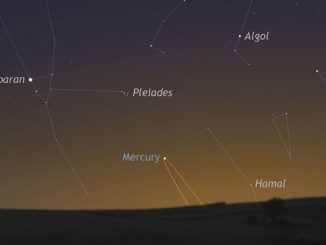A solar eclipse occurs when the Moon’s shadow falls on Earth. The shadow comprises two concentric cones called the umbra and the penumbra. Within the smaller, central umbra, the Sun is completely blocked by the Moon, and anyone inside the umbra sees a total eclipse, as shown in this artist rendition of the 9 March 2016 total solar eclipse. People in the outer cone, the penumbra, will see only a partial solar eclipse. Image credits: NASA’s Goddard Space Flight Center/E. Wright.
Though only people along the narrow path of totality will see the total eclipse, millions more will see some degree of a partial solar eclipse in Asia and the Pacific, including Hawaii and Guam. A partial eclipse will also be visible along the path of totality for over an hour before and after the total eclipse.
NASA, in partnership with the Exploratorium Science Center in San Francisco, will host activities around the 9 March total solar eclipse, including live coverage of the eclipse originating from Woleai island in Micronesia below.
In partnership with Exploratorium, NASA TV will be showing a live stream of the eclipse on 9 March 2016, from 1-2am GMT.



